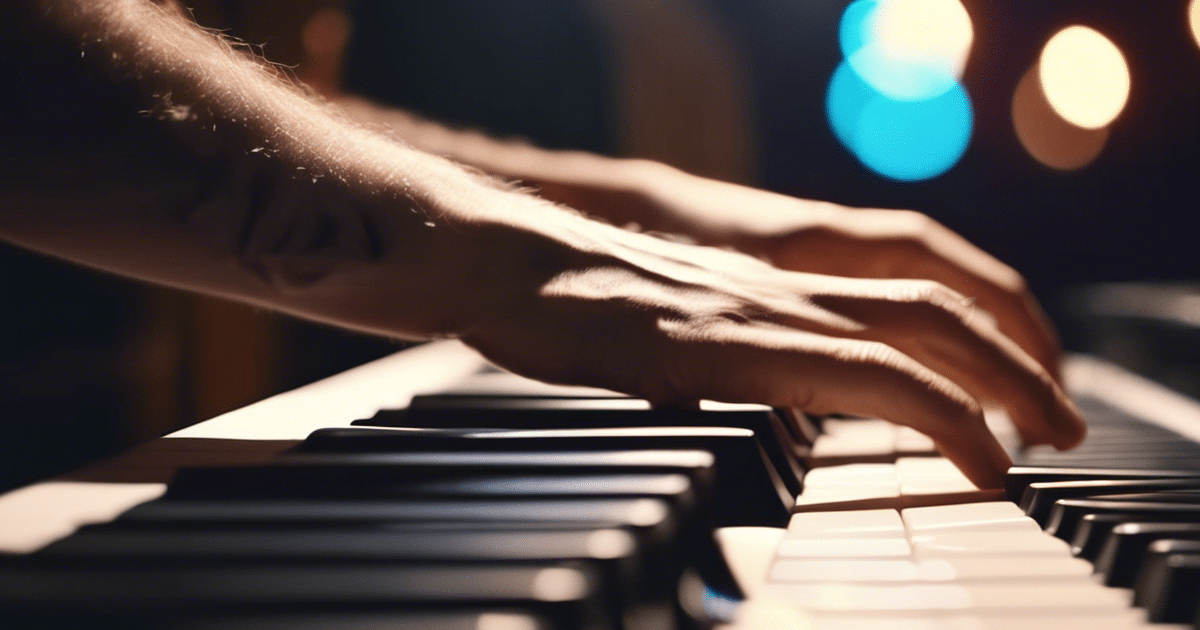Estimated reading time: 9 minutes
Introduction: The Power of Minor Chords in Music
Have you ever wondered why some songs tug at your heartstrings, evoking emotions of melancholy or introspection? More often than not, the answer lies in the use of minor chords. As a musician or music producer, understanding how to make a minor chord is crucial for creating depth and emotional resonance in your compositions. In this comprehensive guide, we’ll explore the ins and outs of minor chords, from their basic structure to their application in various musical contexts.
Table of contents
- Introduction: The Power of Minor Chords in Music
- Understanding the Basics: Major vs. Minor Chords
- How to Make a Minor Chord: Step-by-Step Guide
- Minor Chord Progressions: Creating Emotional Depth
- Playing Minor Chords on Different Instruments
- Advanced Concepts: Beyond Basic Minor Chords
- The Role of Minor Chords in Different Genres
- Tips for Incorporating Minor Chords in Your Music
- Common Challenges When Learning Minor Chords
- Video: How to Make Minor Chords (Tutorial)
- Conclusion: Embracing the Power of Minor Chords
- FAQs
Understanding the Basics: Major vs. Minor Chords
Before we dive into the specifics of minor chords, it’s essential to grasp the fundamental difference between major and minor chords. Both are integral to music theory and play significant roles in shaping the mood and tone of a piece.
Major Chords: The Building Blocks of Happy Tunes
Major chords are often associated with bright, uplifting, and happy sounds. They form the foundation of many popular songs across various genres. A major chord consists of three notes:
- The root note
- The major third (4 semitones above the root)
- The perfect fifth (7 semitones above the root)
Minor Chords: Adding Depth and Emotion
Minor chords, on the other hand, tend to evoke feelings of sadness, introspection, or tension. They’re essential for creating emotional depth in music. A minor chord also consists of three notes:
- The root note
- The minor third (3 semitones above the root)
- The perfect fifth (7 semitones above the root)
The key difference between major and minor chords lies in the third note. By lowering the third note of a major chord by one semitone, you create a minor chord.
How to Make a Minor Chord: Step-by-Step Guide
Now that we understand the basic structure, let’s walk through the process of creating a minor chord.
Step 1: Identify the Root Note
The root note is the foundation of your chord. It’s typically the lowest note and gives the chord its name. For example, in an A minor chord, A is the root note.
Step 2: Find the Minor Third
From the root note, count up three semitones (or half steps) to find the minor third. This is the middle note of your minor chord.
Step 3: Locate the Perfect Fifth
From the root note, count up seven semitones to find the perfect fifth. This completes your minor triad.
Example: Building an A Minor Chord
Let’s apply these steps to create an A minor chord:
- Root note: A
- Minor third: C (3 semitones above A)
- Perfect fifth: E (7 semitones above A)
Therefore, an A minor chord consists of the notes A, C, and E.

Minor Chord Progressions: Creating Emotional Depth
Understanding how to make a minor chord is just the beginning. To truly harness their power, you need to explore minor chord progressions. These are sequences of chords that create a harmonic foundation for a piece of music.
Common Minor Chord Progressions
Here are some popular minor chord progressions used in various genres:
- i – iv – v: (e.g., Am – Dm – Em)
- i – VI – III – VII: (e.g., Am – F – C – G)
- i – iv – VII – III: (e.g., Am – Dm – G – C)
These progressions can be transposed to any key, allowing for versatility in your compositions.
Playing Minor Chords on Different Instruments
The approach to playing minor chords can vary depending on the instrument. Let’s explore how to play minor chords on some common instruments.
Guitar: Fingerings and Fret Positions
On guitar, minor chords can be played in various positions. Here’s how to play an A minor chord:
- Place your first finger on the 1st fret of the B string
- Place your second finger on the 2nd fret of the D string
- Place your third finger on the 2nd fret of the G string
- Strum all six strings
For barre chords, you can use the E-shape or A-shape minor chord forms to play minor chords up and down the fretboard.

Piano: Key Combinations for Minor Chords
On piano, minor chords are played by pressing three keys simultaneously:
- The root note
- The key three half steps above the root (minor third)
- The key seven half steps above the root (perfect fifth)
For an A minor chord, you would play the keys A, C, and E together.
Advanced Concepts: Beyond Basic Minor Chords
As you become more comfortable with minor chords, you can explore more advanced concepts to add richness to your music.
Minor 7th Chords
Minor 7th chords add an extra note to the basic minor triad. This note is the minor seventh, which is 10 semitones above the root. For example, an A minor 7th chord would consist of A, C, E, and G.
Chord Inversions
Inversions involve changing the order of notes in a chord. For a minor chord:
- Root position: Root, minor third, perfect fifth
- First inversion: Minor third, perfect fifth, root
- Second inversion: Perfect fifth, root, minor third
Inversions can help create smoother voice leading and add variety to your chord progressions.
Diminished Chords
Diminished chords are similar to minor chords but have a lowered fifth. They create a tense, unsettled sound that can add drama to your music. An A diminished chord would consist of A, C, and E♭.
The Role of Minor Chords in Different Genres
Minor chords play crucial roles across various musical genres. Let’s explore how they’re used in some popular styles.
Rock Music: Power and Emotion
In rock music, minor chords often provide the foundation for powerful, emotional riffs. They’re frequently used in power chord formations, where only the root and fifth are played, creating a raw, energetic sound.
Pop Music: Balancing Emotion and Catchiness
Pop music often alternates between major and minor chords to create emotional contrast. Minor chords might be used in verses to build tension, leading to a major chord resolution in the chorus.
Classical Music: Depth and Complexity
Classical composers use minor chords extensively to create complex emotional landscapes. They often employ extended chord progressions and modulations between major and minor keys to create rich, nuanced compositions.
Jazz: Sophisticated Harmonies
Jazz music frequently uses minor chords in complex progressions, often incorporating 7th chords, 9ths, and other extensions. The interplay between major and minor tonalities is a hallmark of jazz harmony.
Tips for Incorporating Minor Chords in Your Music
Now that we’ve covered the theory and application of minor chords, here are some practical tips for using them in your own music:
- Experiment with transitions: Practice moving between major and minor chords smoothly. This can create interesting emotional shifts in your music.
- Use minor chords for verses: Minor chords can help create a sense of tension or introspection in verses, setting up for a major chord resolution in the chorus.
- Explore different voicings: Try playing minor chords in different positions on your instrument. This can add variety to your sound and help you find unique textures.
- Combine with major chords: The interplay between major and minor chords can create rich, complex emotional landscapes in your music.
- Listen to diverse genres: Analyze how different styles of music use minor chords. This can inspire new ideas for your own compositions.
Common Challenges When Learning Minor Chords
As you practice minor chords, you might encounter some challenges. Here are a few common ones and how to overcome them:
1. Finger Placement on Guitar
For beginners, placing fingers correctly on the fretboard can be tricky. Practice slowly, ensuring each note rings out clearly. Use a chord diagram as a reference until muscle memory develops.
2. Distinguishing Minor from Major by Ear
Training your ear to recognize minor chords takes time. Listen to songs that prominently feature minor chords, and practice playing both major and minor versions of the same chord to internalize the difference.
3. Smooth Chord Transitions
Moving between chords smoothly is crucial for fluid playing. Practice transitioning between different minor chords and from minor to major chords. Start slowly and gradually increase your speed.
4. Understanding Minor Chord Progressions
Grasping how minor chords fit into progressions can be challenging. Start by learning common progressions and analyzing songs in minor keys to see how they’re used in context.
Video: How to Make Minor Chords (Tutorial)
Conclusion: Embracing the Power of Minor Chords
Minor chords are a fundamental element of music theory and composition. They add depth, emotion, and complexity to your music, allowing you to create rich, evocative soundscapes. By understanding how to make a minor chord and incorporating them effectively into your compositions, you can elevate your musicianship and create more impactful, memorable music.
Remember, mastering minor chords is a journey. It takes time, practice, and experimentation to fully grasp their potential. Don’t be afraid to try new combinations, explore different genres, and push the boundaries of your musical creativity. Whether you’re a beginner just starting to explore chord theory or an experienced musician looking to deepen your understanding, the world of minor chords offers endless possibilities for musical expression.
So, grab your instrument, start experimenting with minor chords, and see where your musical journey takes you. Who knows? The next great song might be just a minor chord away!
Related Posts
FAQs
Major chords are often associated with happy, uplifting sounds, while minor chords evoke emotions like sadness or tension. The key difference lies in the third note: major chords have a major third, while minor chords have a lowered, or minor, third.
To create a minor chord, start with the root note, then find the minor third by counting three semitones above the root, and the perfect fifth by counting seven semitones above the root. This structure gives the chord its distinctive sound.
Popular minor chord progressions include i – iv – v (e.g., Am – Dm – Em) and i – VI – III – VII (e.g., Am – F – C – G). These progressions create harmonic foundations and can be used in various genres to add emotional depth.
On guitar, minor chords are played by positioning your fingers on specific frets. On piano, minor chords are created by pressing three keys simultaneously: the root, minor third, and perfect fifth. The positions and keys vary for each chord.
Minor chords are crucial for adding emotional depth and contrast in music. They are used across many genres, from rock to classical, to convey feelings like melancholy, tension, and introspection, making them essential for well-rounded musical compositions.
